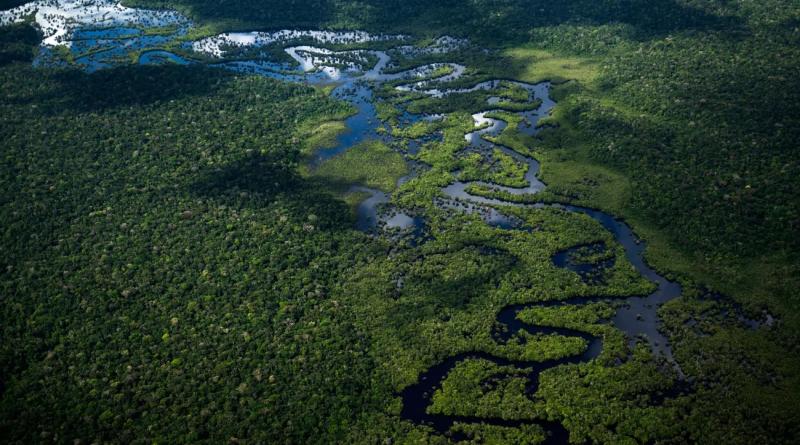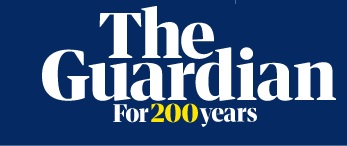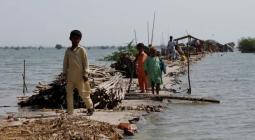The world in 2023: what our writers say you should watch out for

From Ukraine developments and China’s Covid surge to renewable energy and hope for the Amazon
A near-inevitable global recession sparked by a lengthening war in Europe’s frozen east; an energy crisis coupled with soaring inflation; Covid-19 finally running rampant in China – predictions for 2023 are grim. Still, there are reasons to be hopeful. That same energy crisis has spurred an unprecedented demand for renewables, which are expected to boom, while in Brazil, a new president has sworn to protect the Amazon. Repressive regimes, meanwhile, will be nervously looking at Iran, where hardline clerics are locked in a struggle with a formidable pro-democracy uprising that threatens to overwhelm them next year.
Guardian correspondents across the globe have provided their take on what to watch out for in 2023:
A ceasefire in Ukraine?
Will the Ukraine war end in 2023? It’s impossible to imagine a handshake between Volodymyr Zelenskiy and Vladimir Putin, suggesting that a negotiated peace between Ukraine and Russia after 10 months of hard fighting and tens of thousands of casualties on both sides is a long way off.
Ukraine is demanding the creation of a war crimes court for the Russian leadership and reparations from the Kremlin, as well as the restoration of its entire territory. None of this will be conceded by Moscow, which is never going to be faced with a 1945-style total defeat.
A more realistic endpoint would be a military ceasefire, in which two increasingly exhausted combatants see frontline positions harden around a line of control, in effect a repeat of what happened after the fighting of 2014, without the veneer of the previous Minsk peace agreements.
On the current frontlines, or something similar, that would obviously suit Russia, which seeks time to regenerate its shattered military and incorporate a territory roughly the size of Portugal. But it would clearly not suit Ukraine.
The incentive is on Ukraine to probe for weaknesses and try to attack, and its opportunity starts now, in the depths of winter, when the ground is frozen. Although Kyiv warns of Russian counterattacks, Moscow’s efforts are more likely to be limited, even diversionary, probably focused on the Donbas, where it has been on the attack, often ineffectively, since April.
The key point comes when it appears Ukraine’s offensive potential is exhausted. That will become clearer by the summer or autumn, and will at some point prompt a question for its western backers: how long should the west continue supplying military aid at current levels to Ukraine?
Dan Sabbagh, defence and security editor
Possible blackouts across Europe
Russia’s war on Ukraine, the ensuing continent-wide energy crisis and rampant inflation have largely dictated Europe’s fortunes this year, a state of affairs experts say is unlikely to improve – and may well worsen – in 2023.
Europe may be steadily weaning itself off its biggest source of energy – Russian oil and gas – but the cost has been immense, with soaring energy prices hitting households and businesses and governments forced to fund hundreds of billions in subsidies.
Blackouts and gas rationing remain possible across the continent this winter and despite many countries sourcing alternative supplies mainly of liquid natural gas (LNG), next winter could be worse, with analysts forecasting a worst-case gas shortfall approaching 10%.
Much will clearly depend on the severity of the weather – but “sensible” energy prices are not expected to return to Europe until 2025, meaning many economies will continue to suffer: Germany, the EU’s biggest, is expecting its economy to shrink by 0.5%.
Faced with such strong economic headwinds, the EU27’s efforts to hit Russia’s income without doing too much damage to their own are likely to get harder.
Its collective stance also looks set to be hampered further by Hungary’s continuing “blackmail diplomacy”.
Parliamentary elections will be held next year in Finland, Greece and Poland, which like Hungary remains embroiled in an ongoing rule-of-law dispute with Brussels that is likely to intensify next year as both countries seek the release of more EU funds.
Europe’s eyes will also be trained on Spain, where the rightwing PP is currently leading but not forecast to win an outright majority in December 2023 elections – which could mean it seeks parliamentary support from the far-right Vox.
Jon Henley, Europe correspondent, Paris
China finally confronts Covid
The so-called paramount leader, Xi Jinping, became even more powerful this year. In October he secured a third five-year term as leader, purging anyone not deemed utterly loyal from the senior party ranks.
With almost unchecked political power and with no known dissenting voices in his close circles, analysts are watching his moves on Taiwan in particular. Xi has long pledged to annex the island of 23 million people, despite their overwhelming opposition. This year, China’s People’s Liberation Army activities increased (the post-Nancy Pelosi drills gave a taste of what they can do), and official rhetoric escalated.
One possible tempering factor is Ukraine, where Russia’s similar invasion dreams did not go to plan. Xi is likely to be taking lessons. The invasion has also caused China headaches. Xi is a close ally of Putin’s, but wants global leadership, not isolation, so has sought to balance his support for Russia carefully.
Since October, he has set about strengthening foreign ties, meeting with dozens of heads of state. This includes leaders from western nations with which bilateral relations had plummeted amid sanctions over China’s human rights violations, weaponisation of trade, and claims of industrial espionage.
Xi is also contending with a struggling economy, damaged by a property sector collapse and the impact of his hardline zero-Covid policy on domestic business, production, and export sectors.
But the most immediate challenge for China in 2023 is Covid. The stringent zero-Covid policy that kept people safe for most of the pandemic was in 2022 overwhelmed by Omicron and became a chaotic beast of confusing and harmful lockdowns. They sparked the most significant protests seen in China since 1989, before the policy was surprisingly overturned by the government in December. The virus immediately began to rip through the country.
Health authorities have optimistically predicted a peak in infections by mid-January, and a return to pre-2020 normalcy by the middle of next year, but if the trajectories of other countries tell us anything, China is looking at a tough start to 2023. The health system is inadequately prepared and the government has not approved foreign-made vaccines. Too few elderly people have been vaccinated. Zero-Covid wreaked havoc on the economy, but how will authorities deal with successive waves of illness affecting businesses?
Helen Davidson, Taipei
Growing resistance in Iran
After the political earthquake of nationwide protests over women’s rights, Iran faces a defining year in which the regime will either wrest back control of a cowed population or see resistance grow into something that genuinely threatens the Islamic Republic’s 43-year rule.
Although many say something irreversible has been set in train since the death in custody of Mahsa Amini, which prompted the rallies, Iran has a long history of repressing dissent. But a movement that has no stated goals and no leadership, but deep cultural roots may be harder to control.
Much may depend on whether the economy continues to suffer, encouraging a broader impoverished group in society to abandon faith not just in the government, but in the entire system of clerical rule.
Ebrahim Raisi came to power as president in June 2021 unifying the levers of powers in the hands of conservatives in an unprecedented way. But it was a hollow triumph achieved with a record-low turnout. New evidence shows that the lower the turnout in a region, the more likely that region is to have joined the recent protests. Disillusionment now runs deep, with an elderly clerical establishment openly admitting they have lost the nation’s youth.
Raisi has bet all on confronting the west, on the basis of the west’s inevitable decline. So if the west “wins” in Ukraine, he may feel especially exposed after becoming the only major power to supply arms to Russia. Equally if anti-western ideology leads him to reject US terms for lifting economic sanctions in return for a renewal of the 2015 nuclear deal, ordinary Iranians may feel they are being sacrificed by a regime that no longer represents them.
The maximum danger point may come if the 83-year-old supreme leader, Ayatollah Ali Khamenei, dies, prompting an internal power battle that exposes the deep fissures inside the country.
Patrick Wintour, diplomatic editor
An early start to the 2024 US election
America’s fragile democracy is set for yet another stress test in the coming year with an octogenarian president facing a divided Congress, an economy threatened by recession and the prospect of a comeback by Donald Trump.
Joe Biden goes into the year with political momentum. Since he took office America has created 11m new jobs – more than at this point in any presidency. He signed legislation investing billions of dollars in Covid relief, infrastructure, manufacturing and climate, appointed the first African American woman to the supreme court and rallied the west in defence of Ukraine.
But now it gets even harder. From January Republicans take control of the House of Representatives, determined to deny Biden further wins and unleash an array of investigations into his pandemic response, his withdrawal from Afghanistan and his son Hunter’s business dealings. The party’s narrow majority, and noisy pro-Trump wing, is a recipe for chaos.
Much of 2023 will be about 2024 and the race for the White House. Biden, who at 80 is the oldest American president in history, is expected to launch a reelection campaign. Although opinion polls show hunger for a new generation, a better-than-expected performance in the recent midterm elections, and a lack of obvious Democratic challengers, put him in the driving seat.
On the Republican side, this could be the year that finally dooms Trump. The 76-year-old already has already announced his third consecutive run for president but could find himself charged by the justice department for crimes related to the January 6 insurrection, or the mishandling of classified documents, or both. Potential challengers such as Ron DeSantis, the rightwing governor of Florida, are expected to show their hand.
The election results of 2018, 2020 and 2022 suggested that all is not lost for American democracy. But division, rancour, threats of political violence and the spirit of Trumpism persist, even if Trump himself might be fading. Biden, who speaks often of a battle for the soul of America, would be the last to assume that the battle is over.
David Smith, Washington bureau chief
A rising drumbeat of climate chaos
Will 2023 break fresh records as the hottest year on record, and will greenhouse gas emissions continue to rise? Extreme weather events battered swathes of the globe in 2022, with record heatwaves stretching from India to Europe, China and the US, and at both poles. Flooding devastated Pakistan, and famine threatens 150 million people in Africa amid the worst drought there for 40 years.
Whether or not temperature records are broken again, there will be little letup in this rising drumbeat of climate chaos. Greenhouse gas emissions rose in 2022, when they need to be reduced by nearly half this decade, for the world to stay within the scientifically advised limit of 1.5C above pre-industrial levels. The chances of them coming down in 2023 remain slim.
Global talks on the climate, called Cop28, will run for two weeks in December 2023 in the United Arab Emirates, one of the world’s leading oil producers. The fractious Cop27 talks in Egypt produced an agreement to set up a “loss and damage” fund to rescue and rebuild poor countries struck by climate disaster, but expect fierce wrangling this year over how such a fund could work.
There are some hopeful signs. Brazil’s incoming president, Luiz Inácio Lula da Silva, has pledged to reverse the rapid rise of deforestation (see below). Australia’s new government has vowed to prioritise the climate. In the US, massive increases in investment in renewable energy and low-carbon technology are expected, under the Inflation Reduction Act. The EU will trial the first green tariffs, called a “carbon border adjustment mechanism”, to penalise imports of high-carbon goods, from October.
As high fossil fuel prices continue to bite, there will be greater incentive globally to turn to renewable energy and to cut down on the still massive waste of energy. But for emissions to come down, China – the world’s biggest emitter – must move much faster away from coal. Meanwhile, there seems little hope that Russia, the world’s fourth-biggest emitter, will take any action on the increasingly urgent problem of methane from its oil and gas production, while fossil fuel companies and producer countries look set to continue their bonanza. A boom for their shareholders, a bust for the planet.
Fiona Harvey, environment editor
Hope in Brazil, despair in Haiti
Brazil will reboot in 2023 after four chaotic years under the far-right radical Jair Bolsonaro, during which South America’s largest democracy became an international pariah notorious for environmental devastation.
Bolsonaro failed to win a second term in October’s election and will be replaced by the former president Lula, a moderate leftist whose victory cemented his status as Brazil’s most dominant living politician.
Lula has vowed to reunite a bitterly divided Brazil and roll back some of Bolsonaro’s most controversial policies, such as the dramatic relaxation of gun control laws.
Crucially, after Bolsonaro’s era of environmental wrecking and international isolation, Lula has also pledged to make the Amazon and climate emergency priorities and return Brazil to its place on the world stage. A veteran diplomat has been placed in charge of Brazil’s foreign ministry in an attempt to win back former friends alienated by Bolsonaro’s extremist bent.
Such changes will take time and face resistance from many of the 58 million Brazilians who backed Bolsonaro, among them powerful members of the agribusiness lobby. Spasms of turmoil are possible. Following the Donald Trump playbook, Bolsonaro has yet to concede defeat. In December, dozens of supporters rampaged through the capital burning buses and cars.
But there is at least now hope, something desperately lacking farther north in Haiti, which continues to spiral into chaos after the 2021 assassination of its president Jovenel Moïse.
Over the past 12 months warring gangs have commandeered about 60% of Haiti’s decrepit capital, Port-au-Prince. Tens of thousands have fled their homes and a surge in kidnappings has arguably made the Caribbean city the region’s most dangerous. A new outbreak of cholera – first imported to Haiti 12 years ago by UN peacekeepers – has piled on further misery.
Some hope an international military intervention – for which the US has reportedly been trying to enlist Canada and Brazil – may bring a modicum of stability.
But given the long and catastrophic history of foreign meddling in Haiti, many fear such an operation would only add fuel to the fire.
Tom Phillips, Latin America correspondent, Rio de Janeiro
A military buildup in Asia-Pacific
Security issues will loom large in Japan and the wider Asia-Pacific in 2023.
North Korea has resumed test launches of long-range ballistic missiles theoretically capable of striking the US mainland, and 2023 could be the year it demonstrates improvements to its military capability by conducting what would be its seventh nuclear test.
Japan’s government ended 2022 by approving new defence guidelines that the prime minister, Fumio Kishida, said were needed to counter growing threats from nuclear-armed North Korea and a more assertive China.
For the first time, the guidelines mentioned Chinese military activity as a threat to Japan and its neighbours – namely Taiwan – while Tokyo is seeking to double defence spending to 2% of GDP by 2027, bringing it into line with Nato countries. All eyes will be on how China responds to Japan’s more robust stance on security, with the contested Senkaku/Diaoyu islands a potential flashpoint.
Pressure on energy supplies triggered by the war in Ukraine has forced Japan to once again look to nuclear power to enhance its energy security with the possible restart in 2023 of reactors idled in the wake of the 2011 triple meltdown at Fukushima Daiichi.
No national elections will be held in 2023, but Kishida cannot afford to be complacent. His approval ratings have plummeted over revelations, in the wake of Shinzo Abe’s assassination, of longstanding ties between his Liberal Democratic party and the Unification church.
Abe’s death and its aftermath was the most explosive domestic story of 2022 and one that promises to torment the LDP as it attempts to convince the public that it has cut ties with the church and reined in its controversial fundraising methods.
Justin McCurry, Japan and Korea correspondent, Tokyo
‘Cold war-ish’ on the African continent
The optimists will point to the rich creativity of African artists, the success of start-ups and the ingenuity of change agents across the continents. The pessimists will stress the threats of flagging economies, war, famine and the climate crisis. In this, 2023 will be little different from recent years.
But there are some things that will mark the coming 12 months out. One is the double impact of Russia’s invasion of Ukraine and the damage done by the Covid pandemic. Inflation has sent food prices soaring, threatening malnutrition and social unrest. Both will be a factor in elections in Nigeria in February and the Democratic Republic of the Congo in December.
Then there is the trouble with debt, which has left countries from tiny Djibouti in the far north-east to South Africa, the most developed economy on the continent, in deep trouble. Quite who will ride to the rescue of economies in distress is unclear. South Africa can’t keep its own lights on, let alone help anyone else.
Another big challenge is surging Islamic militancy, still making major inroads across the Sahel despite some reversals in Somalia, and elsewhere. Few expect the political instability and failures of governance that contribute so much to extremism to improve any time soon. There will be more fruitless airstrikes and helicopter-borne assaults, and more massacres by mercenaries.
But these are last decade’s wars. The new conflict competition in Africa is between great powers – and smaller ones. For Alex Vines, director of the Africa programme at London’s Chatham House, the continent is more “Cold war-ish” than at any time for decades.
Not only are the US, Russia and China battling for influence and access to resources almost everywhere, but so are the EU and a range of other powers such as France, Turkey, Japan, the UK and the Gulf states – all looking for diplomatic backing on the world stage. As in the 1970s and 1980s, the dozens of UN votes cast by African countries are now as valuable as the uranium, diamonds or gold in their soil.
Jason Burke, Africa correspondent, Johannesburg
A third intifada?
Speculation that Israel and the occupied Palestinian territories are on the brink of a third intifada, or Palestinian uprising, surfaces whenever there is a rise in violence in the decades-long conflict. Unfortunately, the convergence of several different elements means that this grim possibility is more likely in 2023 than ever before.
According to the UN, this year has been the deadliest for Palestinians living in Jerusalem and the occupied West Bank since the organisation started counting fatalities in the territories in 2005, with 140 Palestinians killed.
Most have died in an Israeli campaign of near-nightly raids, which began in March and shows no sign of slowing down or stopping. The bloodshed is galvanising a new generation of Palestinian fighters who are too young to remember the peace process of the 1990s.
A surprise three-day aerial offensive on the blockaded Gaza Strip this summer killed another 49 Palestinians, and Palestinian terrorist attacks have killed 30 Israelis – the highest number since 2008.
Other developments this year that hark back to the violence of the 2000-2005 intifada include Israel’s return to targeted assassinations in the West Bank, the use of sieges on Palestinian neighbourhoods and entire cities, and the first bus bombings in Jerusalem in years.
On the political front there is also a marked deterioration of affairs. The elderly Palestinian Authority president, Mahmoud Abbas, is in ill health, and his death is expected to further destabilise an already combustible situation.
In Israel in November, the most rightwing coalition in history won national elections: many soon-to-be cabinet ministers in Benjamin Netanyahu’s incoming government are bent on expanding illegal Israeli settlements in the West Bank, loosening the rules of engagement for the Israeli police and army, and provoking the Palestinians by expanding the Jewish presence on Jerusalem’s sacred Temple Mount.
With a weak and divided opposition in the Knesset, there is little to stop them.
Bethan McKernan, Jerusalem correspondent, Jerusalem
cover photo: Brazil’s new leader, Luiz Inácio Lula da Silva, has pledged to make the Amazon a priority. Photograph: Mauro Pimentel/AFP/Getty Images





